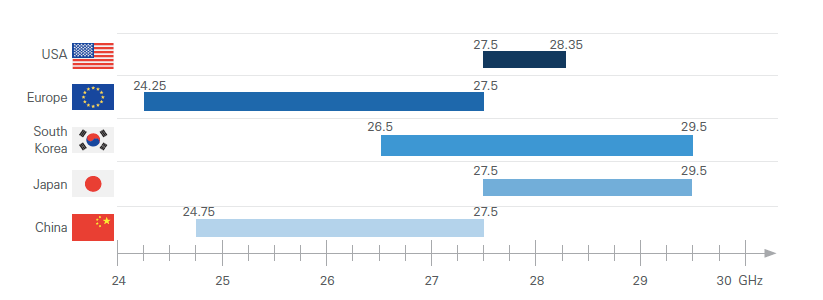5G Band Name
Duplex Mode
Operating Band (MHz)
26500 to 29500 MHz
NR-ARFCN
2054167 to 2104166
Supported Channel Bandwidths
50 100 200 400 MHz
Overview
The 28 GHz band remains the world's most trialled / tested 5G band. Development of the 28 GHz band is ongoing and is headed up by 3GPP TR 38.815. Like all mmWave bands, n257 is a capacity layer designed for short range transmission with high data rates.
The interest surrounding the 28 GHz band is largely due to a combination of three factors;
- Spectrum Availability: large portions of the spectrum are underutilised, allowing several hundred megahertz to be dedicated to 5G services
- Device Complexity: of the available mmWave bands, 26 and 28 GHz bands are the lowest frequencies available, providing better propagation and reduced device complexity
- Geographical Harmonisation: of the available mmWave bands, the 28 GHz frequency range is available in the greatest number of countries across the globe.
Standardising a single 28 GHz band would not be practical as to cover the entire 24.25 to 29.50 GHz range would require RF devices to handle a 5.25 GHz wide bandwidth. As such three bands were defined to cover the three geographical groups:
- n257: Covering 26.5 to 29.5 GHz for Japan, North America, and South Korea
- n258: Covering 24.25 to 27.5 GHz for Europe and China
- n261: Covering a narrower 27.5 to 28.35 GHz for operation alongside n260 (39 GHz) in the United States

5G Channel Widths
The chart below shows 5G NR channel bandwidths for this frequency band. Data includes networks in Trial, Build-Out, and Active status.